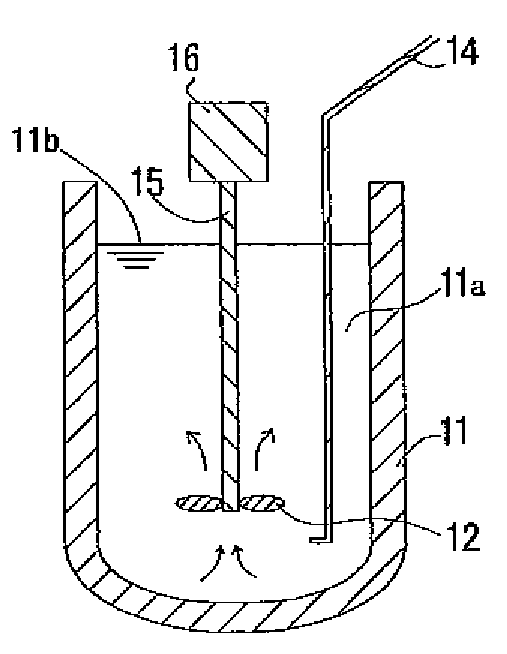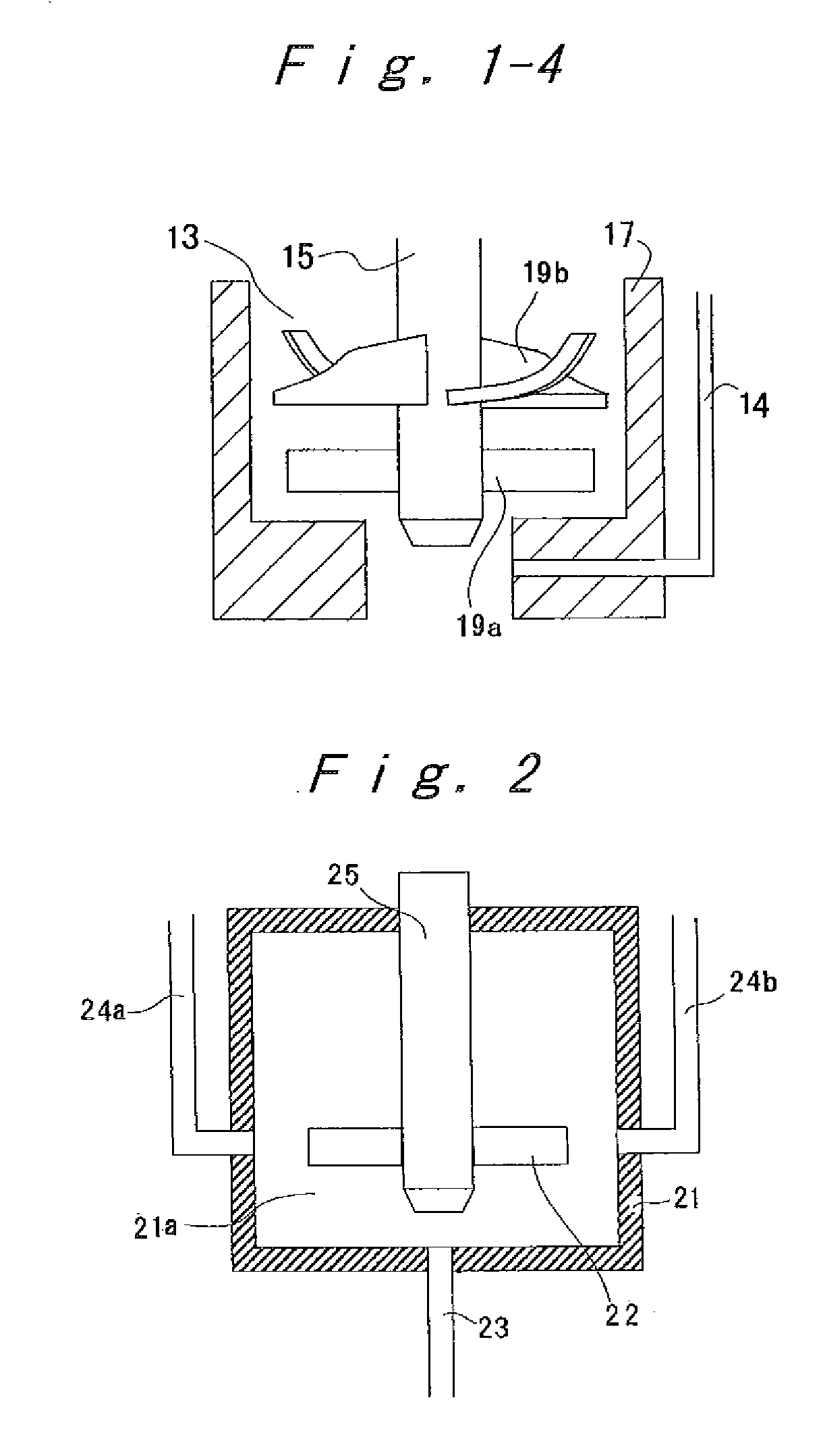Method of producing organic nanoparticles, organic nanoparticles thus obtained, inkjet ink for color filter, colored photosensitive resin composition and photosensitive resin transfer material, containing the same, and color filter, liquid crystal display device and ccd device, prepared using the same
a technology of organic nanoparticles and nanoparticles, which is applied in the direction of liquid crystal display devices, optical elements, diketopyrrolopyrrole dyes, etc., can solve the problems of weak adhesiveness of pigment particles to paper, difficult to give fine particles having excellent monodispersity and nanometer size, etc., to achieve superior display characteristics, high contrast, and the effect of producing organic nanop
- Summary
- Abstract
- Description
- Claims
- Application Information
AI Technical Summary
Benefits of technology
Problems solved by technology
Method used
Image
Examples
example 1
Examples Using a Pyrrolopyrrole Compound Pigment and an Acidic Group-Containing Polymer Compound
example 1-1
[0470]A 15-mmol / L pigment solution was prepared by dissolving a pigment (Pigment Red 254) in a solution prepared by mixing 1-methyl-2-pyrrolidone and a 1-mol / L aqueous sodium hydroxide solution at a ratio of 6:1 (mass ratio). Water was separately provided as a poor solvent.
[0471]100 ml of the pigment solution was injected at a flow rate of 50 ml / min by using an NP-KX-500 large-volume nonpulsating pump manufactured by Nihon Seimitsu Kagaku Co., Ltd. into 1,000 ml of the water as the poor solvent whose temperature had been controlled to 1° C. and which had been stirred with a GK-0222-10 Ramond stirrer manufactured by Fujisawa Pharmaceutical Co., Ltd. at 500 rpm, whereby an organic pigment particle dispersion was prepared.
[0472]The particle diameter and degree of monodispersion of the thus-prepared organic particle dispersion were measured with a Nanotrac UPA-EX 150 manufactured by NIKKISO Co., Ltd. As a result, the dispersion had a number average particle diameter of 31 μm and a degre...
example 1-2
[0478]150 mmol / L of a pigment solution was prepared by dissolving a pigment (Pigment Red 254) in a solution prepared by mixing dimethyl sulfoxide and 8-mol / L aqueous solution of potassium hydroxide at a ratio of 6:1. Water was separately prepared as a poor solvent.
[0479]100 ml of the pigment solution was injected at a flow rate of 50 ml / min by using an NP-KX-500 large-volume nonpulsating pump manufactured by Nihon Seimitsu Kagaku Co., Ltd. into 1,000 ml of the water as the poor solvent whose temperature had been controlled to 1° C. and which had been stirred with a GK-0222-10 Ramond stirrer manufactured by Fujisawa Pharmaceutical Co., Ltd. at 500 rpm, whereby organic pigment particle dispersion was prepared.
[0480]The particle diameter and degree of monodispersion of the thus-prepared organic particle dispersion were measured with a Nanotrac UPA-EX 150 manufactured by NIKKISO Co., Ltd. As a result, the dispersion had a number average particle diameter of 32 nm and a degree of monodis...
PUM
| Property | Measurement | Unit |
|---|---|---|
| size | aaaaa | aaaaa |
| acidic | aaaaa | aaaaa |
| photosensitive | aaaaa | aaaaa |
Abstract
Description
Claims
Application Information
 Login to View More
Login to View More - R&D
- Intellectual Property
- Life Sciences
- Materials
- Tech Scout
- Unparalleled Data Quality
- Higher Quality Content
- 60% Fewer Hallucinations
Browse by: Latest US Patents, China's latest patents, Technical Efficacy Thesaurus, Application Domain, Technology Topic, Popular Technical Reports.
© 2025 PatSnap. All rights reserved.Legal|Privacy policy|Modern Slavery Act Transparency Statement|Sitemap|About US| Contact US: help@patsnap.com



